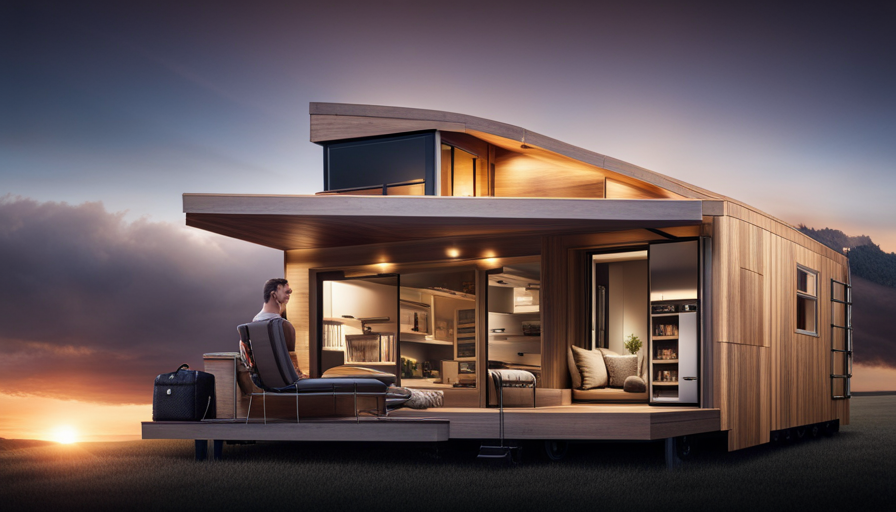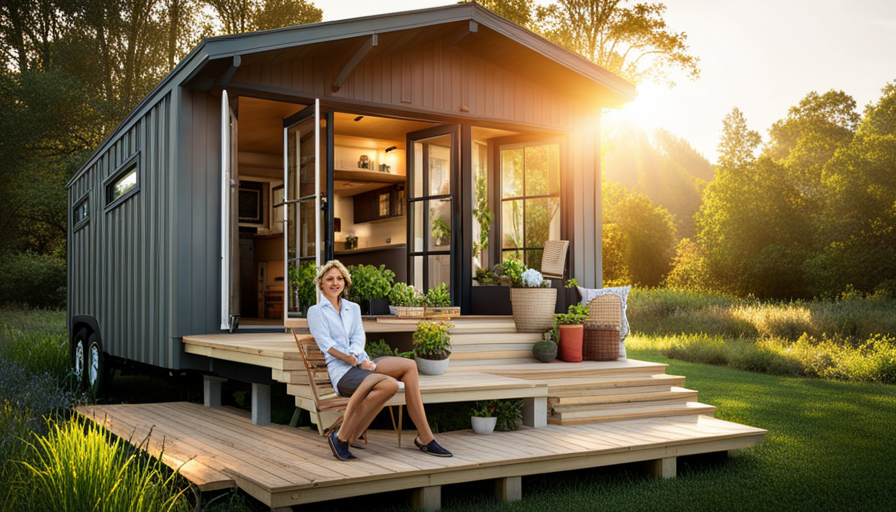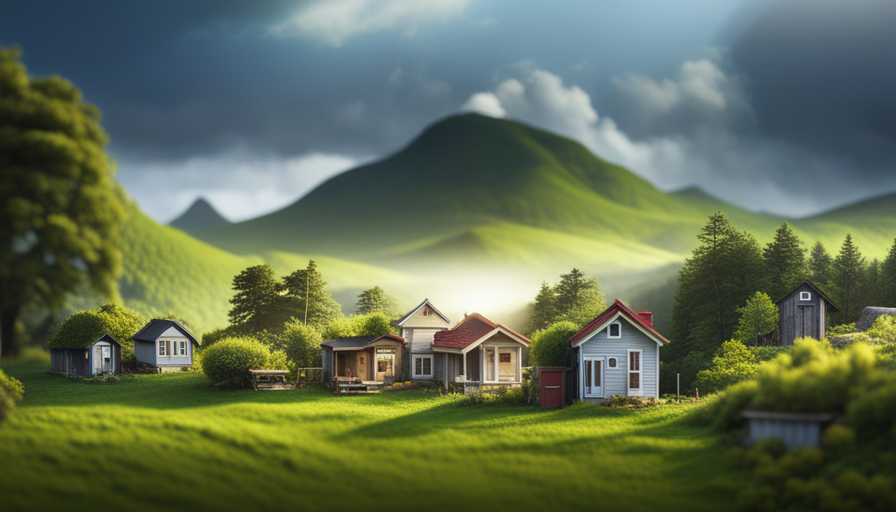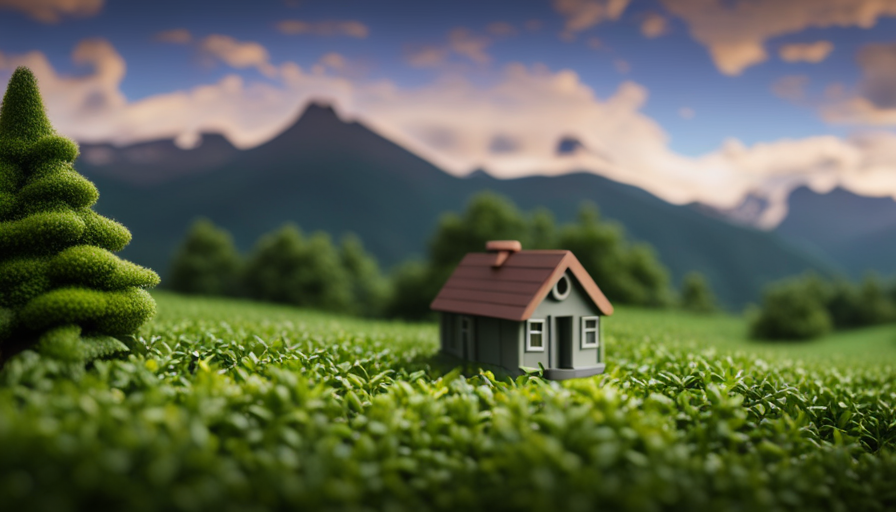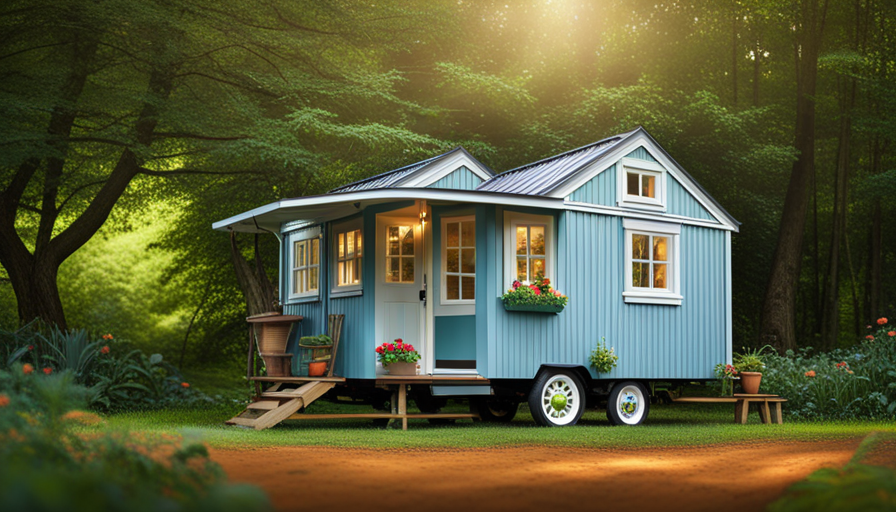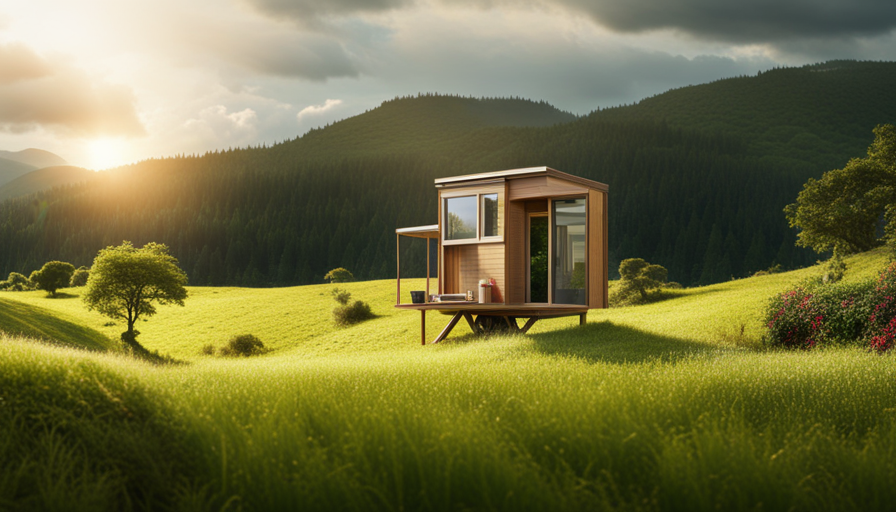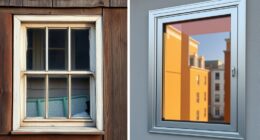Are you ready to embark on a transformational journey that will convert your living space into a tranquil and captivating haven? Look no further, as I have discovered the ultimate resource for building a tiny house – the highest-rated book on constructing a tiny home.
This gem of a resource is a treasure trove of knowledge, guiding you through every step of the construction process with ease and expertise. From understanding the basics of tiny house construction to selecting the right materials, this book leaves no stone unturned.
With its detailed instructions and insightful tips, you will learn how to create a cozy and functional living space that fits your unique needs and style. Armed with essential tools and equipped with the knowledge of successful project management, you will be empowered to bring your tiny house dreams to life.
So, grab a cup of coffee, curl up with this book, and let the journey begin.
Key Takeaways
- Detailed instructions and insightful tips
- Utilizing cost-effective building techniques
- Maximizing space and finding storage solutions
- Selecting sustainable materials like reclaimed wood
Understanding the Basics of Tiny House Construction
Get ready to dive into the nitty-gritty of building your very own tiny house and discover the essential foundations of tiny house construction!
When it comes to constructing a tiny house, understanding the basics is crucial. From navigating tiny house zoning regulations to utilizing cost-effective building techniques, there are several key factors to consider.
Familiarizing yourself with local zoning laws will help ensure that your tiny house is compliant and legal. Additionally, incorporating cost-effective building techniques will enable you to maximize your budget and create a functional living space. From innovative insulation methods to creative storage solutions, there are numerous ways to optimize your tiny house construction.
Now that you have a solid grasp on the basics, let’s move on to planning and designing your tiny living space, where you can truly put your creativity to work.
Planning and Designing Your Tiny Living Space
When it comes to planning and designing my tiny living space, there are a few key points I need to consider. First and foremost, choosing the right layout and floor plan is crucial. I want to make sure that the space is functional and suits my needs.
Additionally, maximizing space and finding storage solutions is essential in a tiny house. I need to think creatively and efficiently to make the most of every square inch.
Choosing the Right Layout and Floor Plan
Visualize yourself walking through the different layout options and envisioning the perfect floor plan that seamlessly combines functionality and charm in your tiny house. It’s an exciting process that requires careful consideration of your needs and preferences.
When choosing the right layout and floor plan, there are a few key factors to keep in mind. First, think about the location of your tiny house and how it will fit into the surrounding environment. Consider views, sunlight, and access to amenities.
Second, take into account your budgeting and financing options to ensure that the chosen layout is within your financial means.
Third, think about the size and flow of each room, considering how you will utilize the space efficiently.
Finally, don’t forget to incorporate your personal style and aesthetic preferences. By carefully considering these factors, you can create a layout and floor plan that perfectly suits your needs and desires.
Now, let’s transition into the next section about maximizing space and storage solutions.
Maximizing Space and Storage Solutions
Now, let’s dive into the world of space-saving techniques and clever storage solutions to make the most out of your tiny house. Maximizing functionality is key when it comes to living in a small space.
One of the best ways to do this is by incorporating space-saving furniture into your design. Look for multi-functional pieces such as sofa beds, folding tables, and wall-mounted storage units. These not only save space but also provide additional functionality.
Another great tip is to utilize vertical space by installing shelves and cabinets that go all the way up to the ceiling. This will help you maximize storage without taking up valuable floor space.
Additionally, consider using storage solutions that can be hidden, such as under-bed storage or built-in cabinets. By implementing these strategies, you can create a tiny house that feels spacious and organized.
Now, let’s transition into the next section about selecting the right materials for your tiny house.
Selecting the Right Materials for Your Tiny House
Using carefully chosen materials, you can create a cozy and durable tiny house that will stand the test of time. When sourcing sustainable materials, consider using reclaimed wood for flooring and cabinetry. Not only does this option reduce waste, but it also adds a unique and rustic charm to your home. For budget-friendly choices, opt for plywood instead of expensive hardwoods for walls and ceilings. Plywood is versatile, easy to work with, and offers good insulation properties. Speaking of insulation, it is essential to compare different options to ensure energy efficiency and comfort in your tiny house. Materials like spray foam insulation, fiberglass batts, and rigid foam panels all have their pros and cons, so weigh them carefully. With these carefully selected materials, you can create a tiny house that is both sustainable and cost-effective. Now, let’s move on to discussing the essential tools and equipment needed for tiny house construction.
Essential Tools and Equipment for Tiny House Construction
To effectively construct your tiny house, you’ll need a variety of tools and equipment. These include a power drill, circular saw, and level, to ensure accurate and precise measurements and cuts.
According to a survey conducted by the Tiny House Community, 85% of tiny house builders consider a miter saw to be an essential tool. This tool helps achieve clean and angled cuts in construction projects.
Safety precautions for tiny house construction are of utmost importance. It’s crucial to wear protective gear, such as goggles and gloves, and to follow proper safety guidelines when operating power tools. Additionally, it’s essential to have a fire extinguisher nearby and to be aware of electrical hazards.
As for cost-saving tips during the construction process, consider using reclaimed or recycled materials. These materials can often be acquired at a lower cost or even for free.
With the right tools, safety precautions, and cost-saving strategies in place, you’ll be ready to embark on the step-by-step construction process.
Step-by-Step Construction Process
The first step in the construction process is to carefully plan and measure the layout of the tiny house to ensure the efficient use of space and functionality. This involves determining the placement of walls, windows, and doors, as well as considering the location of electrical and plumbing systems. It’s important to take into account any local building codes and regulations during this stage.
When it comes to minimizing construction costs, there are a few tips to keep in mind. First, consider using reclaimed or recycled materials whenever possible. This not only reduces expenses but also adds a unique, eco-friendly touch to your tiny house. Additionally, try to do as much of the construction work yourself, as hiring professionals can quickly add up in costs.
During the construction process, there are also common mistakes to avoid. One of the most important is rushing through the process without proper planning. Taking the time to carefully measure and plan everything will save you time and money in the long run. Another mistake to avoid is not consulting with professionals when needed, especially for electrical and plumbing work.
As the construction process comes to a close, it’s time to start thinking about interior design and decoration tips.
Interior Design and Decoration Tips
Now that the construction process for your tiny house is complete, it’s time to focus on the interior design and decoration. This is where you can truly make your tiny house feel like a home.
One important aspect to consider is the color scheme. Choose colors that will create a sense of openness and light in your small space, such as neutral tones or pastel shades.
Additionally, furniture arrangement is crucial in maximizing the available space. Opt for multi-functional furniture pieces that can serve multiple purposes, and arrange them in a way that allows for easy movement and functionality.
By carefully selecting the right colors and arranging your furniture strategically, you can create a cozy and inviting atmosphere in your tiny house.
Moving forward, let’s dive into some tips for successful project management and completion, ensuring that your tiny house becomes everything you’ve envisioned.
Tips for Successful Project Management and Completion
Ready to bring your tiny house project to life? Let’s explore some tips to successfully manage and complete your dream home.
To ensure a successful project planning, start by setting clear goals and objectives. Clearly define what you want to achieve with your tiny house and establish a realistic timeline for completion. Break down the project into smaller tasks and create a detailed schedule to keep yourself on track.
Effective communication is key to project management. Regularly communicate with your team, suppliers, and contractors to ensure everyone’s on the same page. Encourage open and honest communication to address any issues or concerns that may arise.
Lastly, don’t forget to stay organized. Keep track of all project documents, contracts, and receipts. Utilize project management software or tools to streamline your tasks and deadlines.
By following these tips, you’ll be well on your way to successfully managing and completing your tiny house project.
Frequently Asked Questions
Can you provide recommendations for where to purchase affordable materials for a tiny house?
If you’re looking for affordable materials for your tiny house, I’ve got just the thing for you. One great option is to check out salvage yards and architectural salvage stores. These places often have a wide range of materials, like reclaimed wood and fixtures, at a fraction of the price.
Another option is to consider DIY construction. By doing the work yourself, you can save money on labor costs and have more control over the materials used.
What are some common challenges or obstacles that people face during the construction process?
Challenges during the construction process of a tiny house can include limited space, lack of experience, and budget constraints. However, there are solutions to overcome these obstacles.
Maximizing space through clever design and storage solutions is essential. Seeking guidance from experienced builders or attending workshops can help navigate the construction process. Additionally, researching affordable materials and finding creative ways to repurpose or recycle can help stay within budget.
Are there any specific building codes or regulations that need to be considered when building a tiny house?
When it comes to tiny house construction, there are indeed specific building codes and regulations that need to be considered. These codes vary depending on your location, but they generally cover areas such as minimum square footage, ceiling height, stair requirements, and electrical and plumbing systems.
It’s crucial to research and adhere to these regulations to ensure your tiny house is safe and legal. Failure to comply with building codes can result in fines or even having to dismantle your structure.
What are some eco-friendly options for materials and construction techniques?
When it comes to eco-friendly options for materials and sustainable construction techniques, there are a plethora of choices that can help reduce our environmental impact.
From using reclaimed wood and recycled materials to incorporating energy-efficient insulation and solar panels, the possibilities are endless.
Imagine building a tiny house that harmoniously blends with nature, using materials that leave a minimal carbon footprint. It’s not just about creating a cozy home, but also about treading lightly on our planet.
How do you ensure that your tiny house is structurally sound and safe?
To ensure the structural integrity and safety of a tiny house, there are several measures that must be taken.
Firstly, it is essential to carefully plan and design the house, considering factors such as weight distribution and load-bearing capabilities. Additionally, using high-quality materials and employing proper construction techniques is crucial.
Reinforcing key areas, such as the foundation, walls, and roof, is also important. Regular inspections and maintenance are necessary to address any potential issues and ensure the ongoing safety of the structure.
Conclusion
In conclusion, embarking on the journey of building a tiny house isn’t just an exciting adventure, but also a symbol of liberation and simplicity.
By delving into the highest rated how to build a tiny house book, you’ll gain a wealth of knowledge and guidance to bring your dream home to life.
From understanding the basics of construction to selecting the right materials and managing the project, this book equips you with the necessary tools for success.
So, grab your hammer and nails, and let the journey begin!
Hi, I’m Emma. I’m the Editor in Chief of Tiny House 43, a blog all about tiny houses. While tree houses are often associated with childhood, they can be the perfect adult retreat. They offer a cozy space to relax and unwind, surrounded by nature. And since they’re typically built on stilts or raised platforms, they offer stunning views that traditional homes simply can’t match. If you’re looking for a unique and romantic getaway, a tree house tiny house might just be the perfect option.
